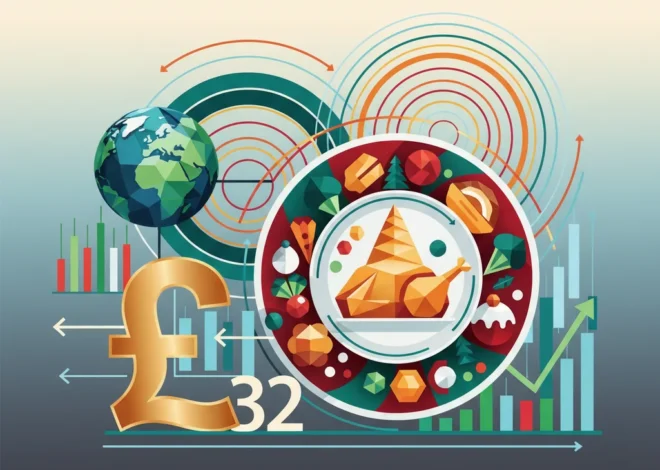The Modern Rake’s Progress: Is Financial Innovation Leading Us to Ruin?
In the pages of the Financial Times, a reader from Stratford-upon-Avon, the home of Shakespeare, recently posed a question of theatrical weight in just two words: “Rake’s progress?” This concise query, submitted by Dora Henry, evokes the famous 18th-century paintings by William Hogarth. The series depicts the story of Tom Rakewell, a young man who inherits a vast fortune only to squander it on a life of luxury, gambling, and vice, ultimately ending in ruin and madness. It’s a timeless cautionary tale about the seductive path from prosperity to destruction.
Today, we find ourselves in a new Gilded Age, not of industrial barons, but of technological wizards and digital pioneers. The world of finance has been radically transformed. But as we navigate this landscape of zero-commission trading, decentralized currencies, and algorithm-driven markets, the question looms large: Are we witnessing genuine progress, or are we, as a society and as individual investors, treading the well-worn path of the modern Rake? Is our infatuation with financial technology an ascent to new heights or a seductive, high-speed descent into chaos?
The New Inheritance: Democratized Access and Digital Gold
Tom Rakewell’s journey began with a sudden, unearned inheritance. Today’s inheritance is not a chest of gold coins, but something far more potent: unprecedented access. With a few taps on a smartphone, anyone can now participate in the global stock market, trade complex derivatives, or buy fractional shares of a company. Fintech platforms have torn down the old gates of Wall Street, promising to democratize finance for all.
This democratization is a monumental achievement. It has empowered millions, offering them tools for wealth creation that were once the exclusive domain of the privileged. According to a 2021 report, retail trading accounted for nearly as much volume as mutual funds and hedge funds combined, a dramatic increase from a decade prior (source). This surge in participation is, on the surface, a sign of a healthier, more inclusive economy. But every inheritance comes with its temptations, and the digital inheritance of market access is no different. The ease of entry has been coupled with a gamified user experience, turning the sober business of investing into a thrilling, casino-like activity where the house, more often than not, still wins.
India's Bull Run: Why the World's Investors Are Doubling Down on the Indian Stock Market
The Modern Tavern: Meme Stocks, Crypto Casinos, and the Siren Song of FOMO
Hogarth’s paintings vividly depict the scenes of Tom Rakewell’s downfall: the taverns, the gambling dens, the brothels. Our modern financial landscape has its own equivalents, digital spaces where discipline gives way to speculative frenzy.
Consider the phenomenon of “meme stocks.” Companies with weak fundamentals saw their valuations soar to astronomical heights, propelled not by earnings reports or strategic plans, but by social media hype, viral memes, and a collective desire to challenge the establishment. This was the modern gambling den, a high-stakes game fueled by the fear of missing out (FOMO) and the promise of “diamond hands.”
Then there is the world of blockchain and cryptocurrencies. While the underlying technology holds revolutionary potential, the public-facing side has often resembled a Wild West saloon. Fortunes were made and lost overnight on coins named after dog breeds or fleeting internet jokes. The NFT boom saw digital images of apes and pixelated characters trading for millions, creating a market that, for many, felt less like an art revolution and more like a speculative bubble of historic proportions. The total market capitalization of crypto assets has been known to shed hundreds of billions of dollars in a single day, highlighting the extreme volatility that novice investors are exposed to (source).
This environment preys on the same human frailties that ruined Tom Rakewell: greed, impatience, and the belief in a shortcut to wealth. The Rake’s progress wasn’t a single bad decision but a series of seemingly small, reckless choices that compounded into disaster. Similarly, an investor today can be lured from a simple index fund to a speculative stock, then to options trading on leverage, and finally into an obscure altcoin, with each step taking on more risk in a desperate chase for exponential returns.
From Personal Ruin to Systemic Risk: The Broader Economic Gamble
Hogarth’s story is a personal tragedy, but when millions of individuals follow a similar path, it becomes a matter of systemic concern. The illusion of progress can mask deep-seated vulnerabilities in the financial system. Is the proliferation of “Buy Now, Pay Later” services a flexible new form of credit, or is it creating a mountain of hidden debt for consumers who can least afford it? Is the interconnectedness of decentralized finance (DeFi) and traditional banking a bridge to a more efficient future, or a contagion vector for the next financial crisis?
History provides a sobering guide. Speculative manias are a recurring feature of economic history, each driven by a new technology or financial innovation that promises to rewrite the rules. The table below compares historical bubbles with some of the trends we see today.
A Brief History of Speculative Bubbles
| Era | Asset | Psychological Driver | Enabling Technology/Innovation | The ‘Pop’ |
|---|---|---|---|---|
| 1630s | Tulip Bulbs | Social status, “get rich quick” mentality | Futures contracts for bulbs | Sudden loss of confidence, price collapse |
| 1990s | Dot-com Stocks | “New economy” paradigm, fear of missing out | The public internet, online brokerages | Collapse of unprofitable tech companies |
| 2000s | US Housing | Belief that “housing always goes up” | Mortgage-backed securities, CDOs | Subprime mortgage crisis, global recession |
| 2020s | Meme Stocks / Crypto / NFTs | Anti-establishment sentiment, gamification | Commission-free apps, social media, blockchain | Ongoing volatility, regulatory crackdown? |
As the table illustrates, the underlying human behaviors are remarkably consistent. What changes is the asset and the technology that enables the frenzy. The danger is that each generation believes “this time is different.” While today’s fintech revolution brings undeniable benefits, it also provides more efficient, more accessible, and more seductive ways to make the same old mistakes.
Korea's Stock Market Surge: Unpacking the Twin Engines of AI and Corporate Reform
Avoiding the Madhouse: A Call for Prudence and Perspective
So, how do we harness the power of financial innovation without succumbing to the Rake’s fate? The answer lies not in abandoning technology, but in pairing its power with timeless principles of financial wisdom.
- Prioritize Financial Literacy: The single most important defense is education. Understanding the difference between investing and speculating, the nature of risk, the power of compounding, and the importance of due diligence is crucial. We must demand better financial education in our schools and for the general public.
- Embrace a Long-Term Horizon: The stock market is a powerful wealth-generation machine over the long term, but a volatile casino in the short term. A focus on long-term goals can help investors tune out the daily noise and avoid emotionally-driven decisions. An S&P 500 index fund has historically provided strong returns for patient investors, a fact often lost in the hype for 100x moonshots (source).
- Regulation as a Guardrail: While innovation should be encouraged, regulators have a critical role to play in protecting consumers. This means ensuring transparency, preventing market manipulation, and establishing clear rules for new asset classes. The goal is not to stifle progress but to build guardrails that prevent the most catastrophic outcomes, much like a seatbelt in a sports car.
- Acknowledge the Value of “Boring”: Not every part of a portfolio needs to be exciting. In fact, the most effective wealth-building strategies are often quite boring. Diversification, regular contributions, and periodic rebalancing are the unglamorous but essential pillars of sound financial health.
The Care-Bot Economy: Why Robots for the Elderly Are Wall Street's Next Trillion-Dollar Frontier
Conclusion: Choosing Our Own Progress
The question of “Rake’s progress?” is not a prediction but a warning. The path Hogarth painted is one of many possibilities. The tools of modern finance—from AI-powered analytics to the global reach of the blockchain—are powerful and neutral. They can be used to build sustainable, inclusive wealth and a more efficient global economy. Or, they can be used to construct a global casino, amplifying our worst impulses and leading us toward a collective, systemic ruin.
The final scene of Hogarth’s series shows Tom Rakewell in Bedlam, the London asylum for the mentally ill, his journey complete. Our financial story is still being written. By embracing the lessons of history, fostering a culture of financial education, and applying timeless principles of prudence to modern technology, we can choose a different path—one of genuine, sustainable progress, not the fleeting, treacherous illusion of the Rake.


